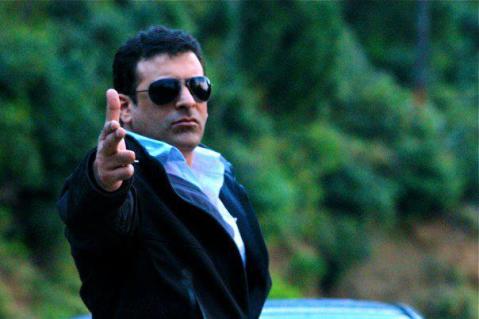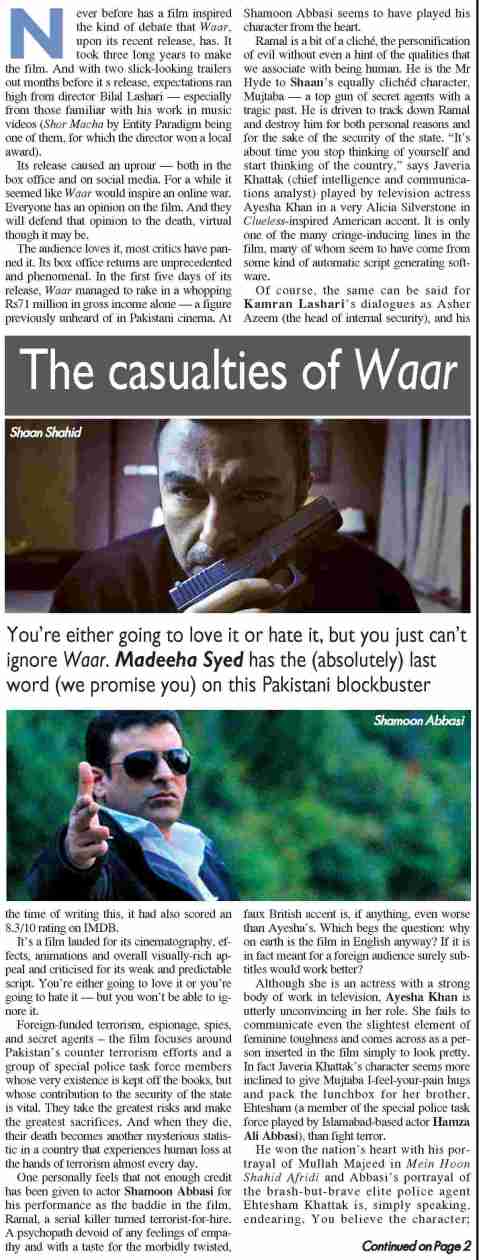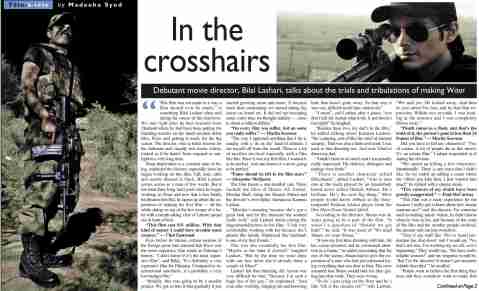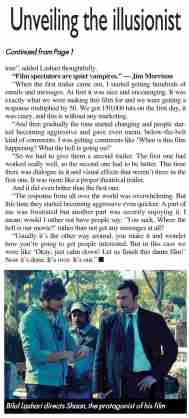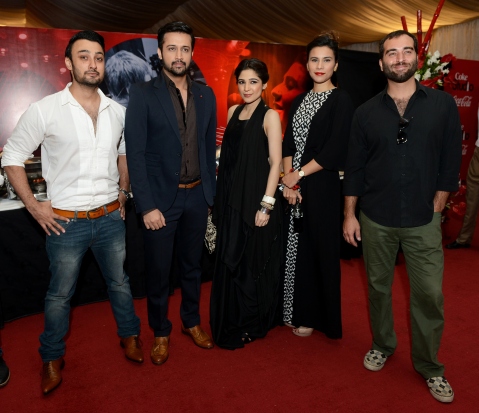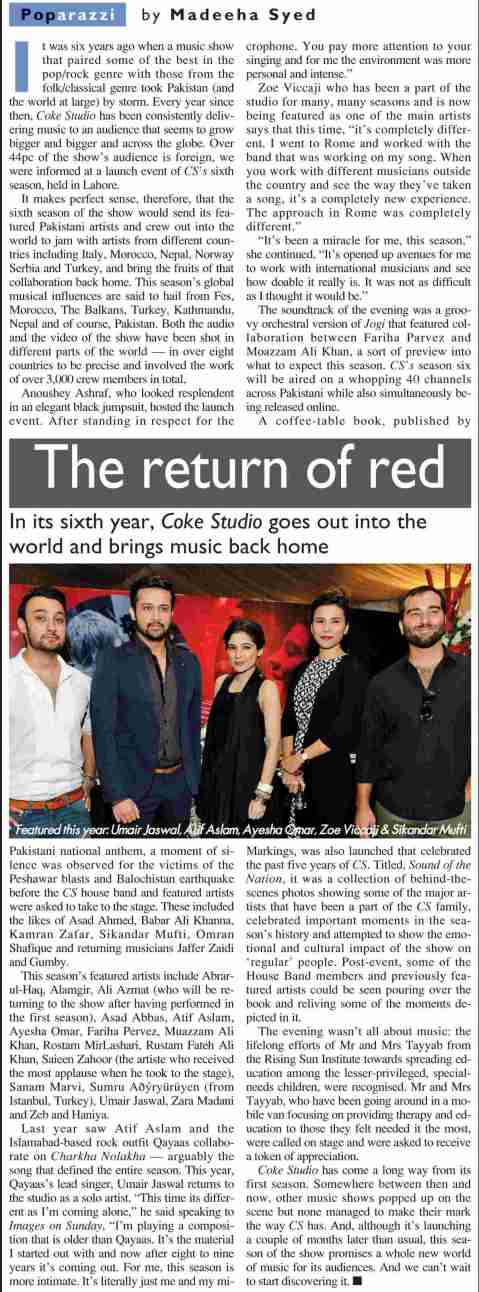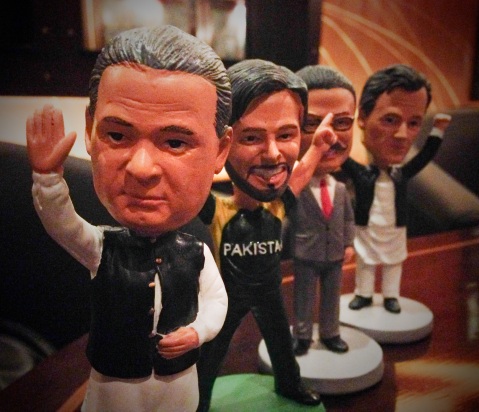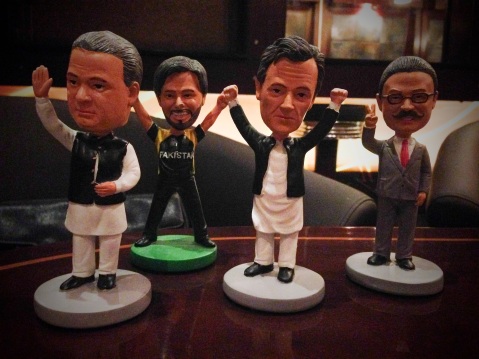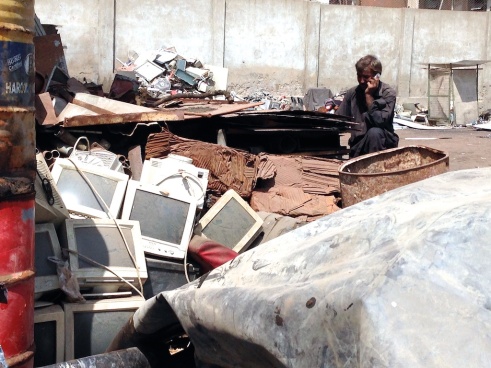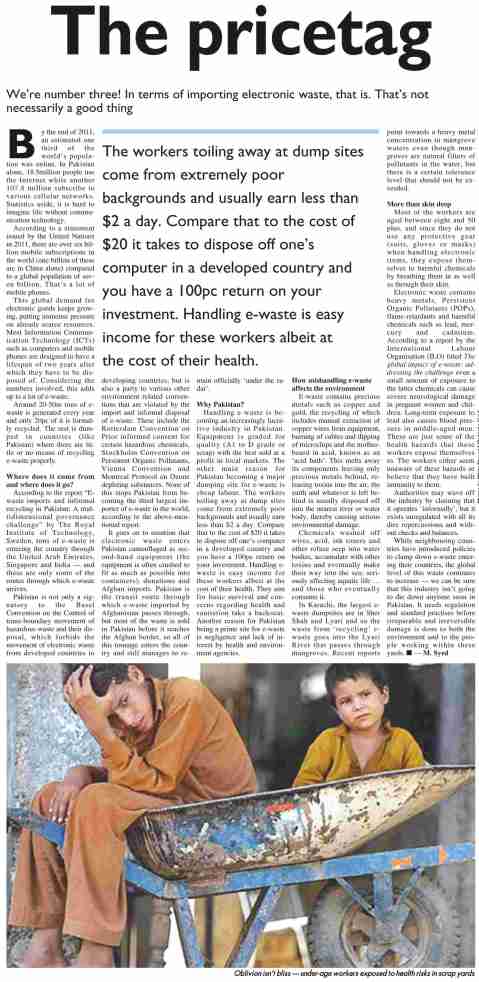Cinemascope: The casualties of Waar
You’re either going to love it or hate it, but you just can’t ignore Waar. Madeeha Syed has the (absolutely) last word (we promise you) on this Pakistani blockbuster
Never before has a film inspired the kind of debate that Waar, upon its recent release, has. It took three long years to make the film. And with two slick-looking trailers out months before it s release, expectations ran high from director Bilal Lashari — especially from those familiar with his work in music videos (Shor Macha by Entity Paradigm being one of them, for which the director won a local award).
Its release caused an uproar — both in the box office and on social media. For a while it seemed like Waar would inspire an online war. Everyone has an opinion on the film. And they will defend that opinion to the death, virtual though it may be.
The audience loves it, most critics have panned it. Its box office returns are unprecedented and phenomenal. In the first five days of its release, Waar managed to rake in a whopping Rs71 million in gross income alone — a figure previously unheard of in Pakistani cinema. At the time of writing this, it had also scored an 8.3/10 rating on IMDB.
It’s a film lauded for its cinematography, effects, animations and overall visually-rich appeal and criticised for its weak and predictable script. You’re either going to love it or you’re going to hate it — but you won’t be able to ignore it.
Foreign-funded terrorism, espionage, spies, and secret agents – the film focuses around Pakistan’s counter terrorism efforts and a group of special police task force members whose very existence is kept off the books, but whose contribution to the security of the state is vital. They take the greatest risks and make the greatest sacrifices. And when they die, their death becomes another mysterious statistic in a country that experiences human loss at the hands of terrorism almost every day.
One personally feels that not enough credit has been given to actor Shamoon Abbasi for his performance as the baddie in the film, Ramal, a serial killer turned terrorist-for-hire. A psychopath devoid of any feelings of empathy and with a taste for the morbidly twisted, Shamoon Abbasi seems to have played his character from the heart.
Ramal is a bit of a cliché, the personification of evil without even a hint of the qualities that we associate with being human. He is the Mr Hyde to Shaan’s equally clichéd character, Mujtaba — a top gun of secret agents with a tragic past. He is driven to track down Ramal and destroy him for both personal reasons and for the sake of the security of the state. “It’s about time you stop thinking of yourself and start thinking of the country,” says Javeria Khattak (chief intelligence and communications analyst) played by television actress Ayesha Khan in a very Alicia Silverstone in Clueless-inspired American accent. It is only one of the many cringe-inducing lines in the film, many of whom seem to have come from some kind of automatic script generating software.
Of course, the same can be said for Kamran Lashari’s dialogues as Asher Azeem (the head of internal security), and his faux British accent is, if anything, even worse than Ayesha’s. Which begs the question: why on earth is the film in English anyway? If it is in fact meant for a foreign audience surely subtitles would work better?
Although she is an actress with a strong body of work in television, Ayesha Khan is utterly unconvincing in her role. She fails to communicate even the slightest element of feminine toughness and comes across as a person inserted in the film simply to look pretty. In fact Javeria Khattak’s character seems more inclined to give Mujtaba I-feel-your-pain hugs and pack the lunchbox for her brother, Ehtesham (a member of the special police task force played by Islamabad-based actor Hamza Ali Abbasi), than fight terror.
He won the nation’s heart with his portrayal of Mullah Majeed in Mein Hoon Shahid Afridi and Abbasi’s portrayal of the brash-but-brave elite police agent Ehtesham Khattak is, simply speaking, endearing. You believe the character; you even begin falling in love with it but fall short of doing so entirely because his character isn’t as developed and doesn’t get as much screen time as one feels he deserved. If only.
There are times when it seems as though Ali Azmat is parodying the stereotype of a Pakistani politician, rather than acting like one, in his portrayal of the character of Ejaz Khan — a politician hell-bent on finishing building a dam. It is, however, in Ejaz Khan’s Evita moment, when he stands in a balcony overlooking his sprawling estate, imagining the roar of the crowd below him with his arms stretched out (Don’t cry for me Sheikhupura?) when we are convinced that this truly is a politician with a heart of gold — with the ego of a classic narcissist to match.
His open-mouthed water-dripping-over-his-body bathroom shower scene, however, is cringe worthy. Ali Azmat might arguably be Pakistan’s biggest ‘mature’ rock star, but sex symbol he is definitely not.
Ejaz Khan’s paramour and secret Raw agent, Lakshmi, is acted convincingly by the multitalented Meesha Shafi. From an do-gooder aid worker, to a vamp to a tough agent struggling to achieve her evil goals and who has no issues about delivering a kick where it hurts the most if you dare mess with her, Meesha’s character flows effortlessly between these roles with a grace that can simply be described as natural. Having said that, showing a Raw agent’s cover as an NGO worker in a country where women polio workers are killed for doing the work that they do, is more than a tad irresponsible.
The director makes a cameo appearance in the film on several occasions, as a sniper whose appearance resembles Tom Cruise from Top Gun. There was a bit of debate on social media as to the identity of the sniper, well, here you have it: the ‘pappu’ gunman is Bilal Lashari himself.
The film scores points for its brilliant visuals, its action-packed sequences that can either get your adrenaline pumping or leave you with an amused smile. Don’t try to find meaning or some kind of ‘intellectual stimulation’ in the film. Waar isn’t that kind of movie, it’s not even pretending to be. In fact, it has the depth of a children’s wading pool. On an emotional level, the film leaves you feeling absolutely nothing. What it does is make you want to pick up a walkie talkie and play secret agent when you go back home.
Newspaper view: [Click for larger image]
Small soliders
If you have time to spare, there isn’t a better way to spend it than making a sick child’s day a little brighter.
It was around a year ago when Ayesha Omar was told that two terminally-ill children (one suffered from leukaemia and the other from thalassemia major) had requested the Make-A-Wish Foundation that their dying wish was to meet a character she plays, Khoobsurat, in a television comedy show called Bulbulay. It was mentioned in passing and no one from the foundation got in touch with her. Life intervened and the request was forgotten, or rather, it was put on hold.
A year later, a friend of Ayesha Omar posted a link from the Make-A-Wish Foundation’s website on Ayesha’s Facebook wall. It contained a list of all the wishes terminally-ill children had made that they hoped would come true. “Two kids had written that they wanted to meet Khoobsurat,” said Ayesha, who was completely bowled over by the thought that a character she played in a television show would mean so much to them. She wanted to meet those children and grant them their wish and decided to take the initiative to contact the foundation herself.
“I got their contact information off their website and called them,” she said, “I told them that I had read the wish list the children had put up that I wanted to make their wish of meeting Khoobsurat come true for them. They were really shocked. According to them, no one had ever gotten in touch with them like this before.” The Foundation and Ayesha then made a plan of how they were going to get the children to meet their favourite television character. PTV was interested in filming this moment, so they decided that they would call the children on the state-owned channel’s morning show.
“At the very last minute, we decided to give them a surprise,” related Ayesha, “When the children were on their way to the studio they were told that Khoobsurat couldn’t make it.” They were understandably crushed. During the filming of the show, Ayesha made her surprise appearance. “They were really shocked!” she laughed, “It was really nice. Those two girls were completely in awe. They were completely ecstatic.”
“I had no idea they were such big fans!” she said, “One of them wanted to be me. She had tried to dress up like me and accessorised her outfit with the same kind of bangles and rings that I wear on the show.”
While efforts like this do not of course fight the disease directly, they do provide moments of joy for those children who are fighting for their lives.
Cancer among children can occur suddenly, without any visible early symptoms. There is, however, a high rate of cure if detected early. One of the most common forms of cancer among children is leukaemia (around one third of all cancers afflicting children worldwide). These are followed by brain and central nervous system tumours, neuroblastoma, lymphoma, bone cancers, etc. The causes of childhood cancers are largely unknown but are usually attributed to ionising radiation exposure (perhaps due to parental occupation), specific genetic and chromosomal abnormalities, etc.
Children with Down’s syndrome and Aids have a higher risk of developing cancer. Children who undergo radiation from chemotherapy are also at a greater risk for developing secondary primary cancer.
Treating a child afflicted with cancer thus requires a different approach, not so far as treatment goes but when dealing with the psychological effects.
“Sick children are admitted here from all over, from Pakistan’s rural areas and also from Afghanistan and Iran,” says Sarwat Kamal, the medical social officer at the Children’s Cancer Foundation, Pakistan.
“Many of them are away from their homes for the first time and are very scared. The younger ones may not understand what is happening to them, but the older children do, and it’s very easy for them to slip into depression,” she says.
This is where the volunteers come in. The CCF receives dozens of volunteers from schools and so on, and according to the hospital staff, they play an invaluable role.
“The children, some of whom have to be admitted for weeks and months, get tired of seeing the same old faces, and so when the volunteers come in, you see big smiles on the children’s faces,” says Kamal.
The volunteers play with the children, read them stories and even teach them how to make toys.
“Their importance can’t be overstated,” says Kamal. “Without them, the children would spend every day dreading their next test, or wondering if they’re going to live. The volunteers help them be children again, if only for a little while. And that’s crucial.”
Newspaper view: [Click for larger image]
In the crosshairs
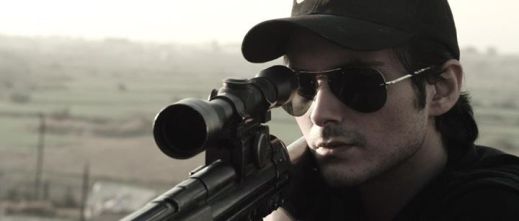
[Listen to the interview by clicking PLAY here]
Debutant film director, Bilal Lashari, talks about the trials and tribulations of making Waar
“This film was not made in a way a film should ever be made,” is something Bilal Lashari often said during the course of this interview. We met right after he had returned from Thailand where he had been busy putting the finishing touches on his much-awaited debut film, Waar and getting it ready for the big screen. The director, who is better known for his elaborate and visually rich music videos, looked as if he hadn’t been exposed to sunlight in a very long time.
Sleep-deprivation is a constant state of being, explained the director, especially since he began working on this film. Tall, lean, calm and mostly dressed in black, Bilal Lashari comes across as a man of few words. But it has been three long, hard years since he began working on Waar and now that is has finally hit theatres this Eid, he opens up about the experience of making his first film — all the while sitting on top of the fire escape of a hotel with a breath-taking view of Lahore spread out in front of him.
“This film cost $31 million. With that kind of money I could have invaded some country.” — Clint Eastwood
Even before its release, certain sections of the foreign press had claimed that Waar was the most expensive film made in Pakistan’s history. “I don’t know if it’s the most expensive film”, said Bilal, “It’s definitely a very expensive film for Pakistan. Compared to international standards, it’s probably a very low-budget film.”
“Initially, this was going to be a smaller project. We got so into it that gradually it just started growing more and more. It became more time consuming; we started taking big actors on board etc. It did end up becoming more costly than we thought initially — close to about a million dollars.”
“On every film you suffer, but on some you really suffer.” — Martin Scorsese
“The way I approach anything that I do is usually with a ‘do or die’ kind of attitude. I cut myself off from the world. There is a lot of sacrifice involved especially with a film like this. Since it was my first film, I wanted it to be perfect. And one knows it’s never going to be perfect.”
“Fame should be left to the film stars.” — Alexander McQueen
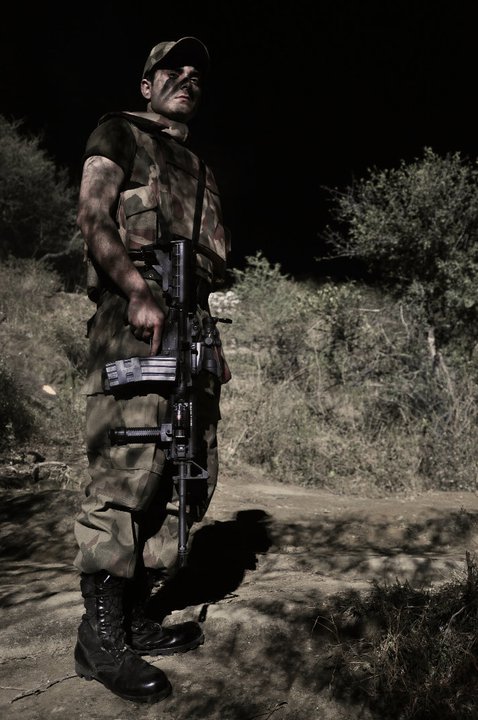 The film boasts a star-studded cast. These include the likes of Shaan, Ali Azmat, Meesha Shafi, rising star Hamza Abbasi and the director’s own father, bureaucrat Kamran Lashari.
The film boasts a star-studded cast. These include the likes of Shaan, Ali Azmat, Meesha Shafi, rising star Hamza Abbasi and the director’s own father, bureaucrat Kamran Lashari.
“Meesha’s amazing because she’s got a great look and for the character she worked really well,” said Lashari about casting the singer/model/actress in his film. “I felt very comfortable working with her because she’s almost like family. Mahmood (her husband) is one of my best friends.”
This was also essentially her first film. “Maybe at the time it started!” laughed Lashari, “But by the time we were done with our last shoot she’d already done a couple of films!”
Lashari felt that directing Ali Azmat was very difficult for him, “Because I’m such a huge fan of the guy,” he explained, “And even after working, hanging out and knowing him, that hasn’t gone away. So that way it was very difficult to tell him what to do.”
“I mean”, said Lashari after a pause, “you don’t tell Ali Azmat what to do. It just doesn’t feel right!” he laughed.
“Besides these two, my dad’s in the film,” he added talking about Kamran Lashari, “He’s playing, sort of like the chief of internal security. That was also a little awkward. I was used to him directing me. And now I had to direct my dad.
“I didn’t have to do much and I am actually really impressed. His delivery, dialogues and timings were fresh.”
“There is another character called Ehteshaam”, added Lashari, “who is also one of the leads played by an Islamabad-based actor called Hamza Abbasi. He’s brilliant. He’s the next big thing.” Most people would know Abbasi as the fiery-tempered Pashtun cricket player from the film Main Hoon Shahid Afridi.
According to the director, Shaan was always going to be a part of the film. “It wasn’t a question of ‘Should we get him?’” he said, “It was more of ‘We need Shaan, we want Shaan.’”
“It was my first time shooting with him. He’s got great screen presence and he commands attention in a frame,” he added relating that for one of the scenes, Shaan had to give the expression of a man who had just witnessed loosing everything that was dear to him. The crew assumed that Shaan would take his time getting into that mode. They were wrong.
“So he’s just lying on the floor and he’s like ‘Oh is the camera set?’” tells Lashari, “We said yes. He looked away. And then he just raised his face and he had that expression. Within two seconds. I was looking at the monitor and I was completely blown away.”
“Death comes in a flash, and that’s the truth of it, the person’s gone in less than 24 frames of film.” — Martin Scorsese
Did you have to kill any characters? “Yes, of course. A lot of people die in this movie. It’s an action film,” Lashari responded as if stating the obvious. “We ended up killing a few characters. Intentionally. There is one extra that I didn’t like. So we ended up adding a scene where the villain just kills him. I just wanted him dead!” he replied with a sinister smile.
“The rumors of my death have been greatly exaggerated.” — Paul McCartney
“This film was a crazy experience for me because I really got to learn about how crazy rumours are!” said the director. For someone used to making music videos, he didn’t know what he was in for, and because of the scale of the film and the number people involved, the rumour mill ran into overdrive.
“They’d say stuff like ‘We’ve heard production has shut down’ and I would say ‘No, that’s not true. I’m working my ass off, so it’s happening.’ They would say, ‘We have really reliable sources!’ and my response would be, ‘But I’m the director! It doesn’t get anymore reliable than this!’” he recalled.
“People want to believe the first thing they hear and they somehow want to make that true”, added Lashari thoughtfully.
“Film spectators are quiet vampires.” — Jim Morrison
“When the first trailer came out, I started getting hundreds of emails and messages. At first it was nice and encouraging. It was exactly what we were making this film for and we were getting a response multiplied by 50. We got 150,000 hits on the first day, it was crazy, and this is without any marketing.
“And then gradually the tone started changing and people started becoming aggressive and gave even mean, below-the-belt kind of comments. I was getting comments like ‘When is this film happening? What the hell is going on?’
“So we had to give them a second trailer. The first one had worked really well, so the second one had to be better. This time there was dialogue in it and visual effects that weren’t there in the first one. It was more like a proper theatrical trailer. And it did even better than the first one.
“The response from all over the world was overwhelming. But this time they started becoming aggressive even quicker. A part of me was frustrated but another part was secretly enjoying it. I mean, would I rather not have people say: ‘You suck. Where the hell is our movie?’ rather than not sending any messages at all?
“Usually it’s the other way around, you make it and wonder how you’re going to get people interested. But in this case we were like ‘Okay, just calm down! Let us finish this damn film!’ Now it’s done. It’s over. It’s out.”
Newspaper View: [Click for larger image]
Bakra online!
This Eid let your bakra come to you!
As Baqr Eid nears, you know that, at some point — before the animal slaughter-fest and never-ending family barbecues that dominate this holiday — you’re going to have to make a trip that no civilised man in the modern world should have to make. It’s time to go mad, cow hunting.
Let me paint a picture of what you know you’ll have to endure: a long drive out of the city to the bakra mandi; the stench of poop, hay and hooves combined with both human and animal sweat, hours and hours of searching and examinations (how many teeth, tongues and tails does it have?) coupled with impending migraines from all that haggling with the dealers. To top it off, the weather is only getting warmer. And those tents aren’t air-conditioned.
How far are you willing to go to personally see through every step of this madness? What if there was a way to bypass all of the above unpleasantness, save your nostrils some trauma, your car some potential piss and still get your bakra?
The answer to all your problems is one click away. Order your bakra online. Browse through catalogues that contain photos of sacrificial animals. We went through several websites that offer sacrificial animals online. One of them, an online marketplace Olx.com.pk has individual owners posting offers of their animals online and they do so throughout the year. Another website, Buy-bakra.blogspot.com had out-of-this-world photos of beautiful, seemingly blow-dried animals in scenic backgrounds to choose from. It appears defunct, however, considering that the last post on it was in 2009.
Two of the most comprehensive online animal buying websites one found was CowMandi.com and EidQurbani.com.pk. The former contains photos of animals from various farms, with each farm listed; along with these, are given various cattle-related trade events with one section of the website devoted to animals that are up for sale.
EidQurbani.com.pk, however, seems to cater exclusively to the Eid buyer. They have been in business for the last five years and have posted on their website that, “we offer pictures of animals alive and slaughtered to reinforce your confidence in us.” Animals are divided into different categories. Details regarding their size, weight, gender, price, etc. are all available. Bakras are priced between Rs19,500 and Rs26,500, while cows start from Rs60,000 with the most expensive one priced at Rs145,000. Bulls range from Rs56,500 to a whopping Rs212,000. To use the service you need to register an account and they take cash upon delivery of the ‘product’.
When one asked around, Mrs Parveen Khan, a 45-year-old homemaker, who has previously ordered her animal online, was quite satisfied with the service. “I didn’t know what to expect,” she said, “but I didn’t think there was any harm in trying. Plus, it’s not as if I was making any advance payments that I was at risk of losing. It’s cash on delivery and I had the bakra inspected by the neighbourhood butcher just to be on the safe side. I think it is a very convenient service to have.”
Faisal, 34, who runs his family jewellery business and belongs to Karachi’s Memon community, is open to the idea of ordering a bakra online instead of going to the mandi. “I’ve never enjoyed the process of taking a day off and going to the bakra market. For the past several years, my brother has been buying my bakra for me,” he said, “if the service is legitimate, and even if I have to pay a few thousand rupees extra, I would love to be able to order my bakra online.” He added that he wasn’t sure if the notion of an online bakra mandi would take off in Pakistan as for most of the people in his neighbourhood, the process of personally going to the mandi was an event they prepared and looked forward to. And later, they enjoyed parading their buy around fishing for compliments. The online bakra delivery system wouldn’t work for them, Faisal said.
“Hell no!” responded Asad, 27, a professional photographer, “I’m not big on Baqr Eid, but no matter how legitimate the service, I wouldn’t trust them to buy a bakra for me. You need to go to the mandi and see for yourself the condition and price of the animal you are going to buy.” That was an interesting response coming from a person who doesn’t feel strongly about the religious festival.
If the mere notion of making a trip to the bakra mandi fills you with dread, be a little adventurous and try something new. Go online, select your bakra, a delivery date, arrange for the payment and soon, the bakra of your choosing will be ringing your doorbell.
BYOP: Buy your own politician
The politics behind the new “top secret toys for highly mature adults!”
First you could eat them (‘Nawaz Sharif’s Chatpata Churan’ and ‘Tabdeeli Ka Nishan Imran Khan Churan’ — both purely Lahori creations). Then you could flash them (remember the cheap torch-equipped lighters that would project the image of your chosen political leaders on the wall!) And now, you can play with them, pummel them or just watch their oversized heads wobble.
Anything is possible in ‘Naya Pakistan’, especially when a budding new enterprise comes up with an ingenious concept: buy your own politician.
“And why not?” ask the men behind Bobble Dobble, a new online venture that sells limited-edition bobblehead dolls in the shape of our politicians. “They’ve bought and sold us many times, so now we’re going to sell them instead. We wanted to show these people, who were supposedly ‘in charge’ of us, in a fun light.” Their business was only 1.5 days old when I met them, and they had already gotten 20 orders — each one for a multiple set of dolls.
It was at a café in Zamzama (the location of which will be kept secret for security purposes) where we met the men behind this ‘daring’ yet loveable enterprise. Unwilling to use their real names, they chose their own aliases and shall henceforth be referred to Victor McPherson (Irish mafia), Don Pablo (Ecuadorian lover) and Mr Mister (mashoor rap-star). Yes, seriously.
On top of the table is their first batch of toys: a strangely slim Nawaz Sharif waving his hand, Shahid Afridi with both his arms up in a permanent state of triumphant joy, Imran Khan flashing a V sign (construe what you may from this) and Asif Zardari with his perpetual pearly-toothed smile. In fact, this particular Zardari had the ends of his moustaches fashionably tweaked upwards. It turns out that each Bobble Dobble doll is unique in its own way. In short: if you change the doll, you get a new moustache.
But how did they miss out on creating an Altaf Hussain doll? “Altaf Bhai ko kaun khareed sakta hai?” asked McPherson immediately, looking over his shoulder. Point noted.
Their website states that they sell ‘top secret toys for highly mature adults’, so what made them enter the adult toy industry, I ask? The men burst into laughter. Five whole minutes later, and they’re still laughing. “This is basically humour for adults. If you’re an adult, you’ll understand it,” said McPherson, wiping tears from his eyes, “that’s why we’ve classified it as ‘toys for adults’.”
“These toys are supposed to make your day better,” said Mr Mister, “if at the end of the day you’re really angry and frustrated at these politicians, you can take it out on the dolls.” Oh, okay. “But we don’t encourage violence of any sort!” he added forcefully.
Their website states, ‘You can put them on your car’s dashboard, office desk, or burn them in protests. We don’t care once you’ve bought them.’ “Yes, absolutely,” said McPherson, delving into how the idea of creating bobblehead dolls on politicians came about.
It all started some time ago when he was driving down a street in Lahore and came face-to-face with a poster of Asif Ali Zardari. That led this young man to question: “If politicians can exploit us to make money, why can’t we exploit them?” And thus, a Pakistani bobblehead dream was born.
Meet a real life Bobble Dobbler
Shakir Husain, (almost) 38, is a Karachi-based entrepreneur and storyteller who dabbles in capacity building. When he first came across the toys on a social media website, not only did he decide to place an order of dolls for himself, but he also wanted to share the love: he ordered extra units as presents.
What compelled him to place his order? Who did he buy? “It seemed like something fun and interesting with a political bent,” responded Husain, “I bought the three politicians and skipped out on Afridi.”
Did he think he got a fair bargain? “A thousand bucks a pop seems quite fair,” said the satisfied customer.
How did it feel buying a politician? Did he feel a surge of power rush through his veins? Like the ‘king of the world’, maybe? “If only they came so cheap,” he lamented, “When buying a politician, one must ensure that it’s one which can get some SROs passed.”
Did he see his favourite politicians up for sale? Who did he miss and would like to see up for grabs in the future? “Unfortunately, I didn’t,” Husain responded ruefully, “I would like to see Wasi Zafar, Abida Hussain and Shaikh Rashid. I think Benazir Bhutto, General Zia, Ghulam Ishaq Khan, Nawabzada Nasrullah and General Musharraf should all be there.” Evidentially, he was just full of helpful suggestions. “We need to learn how to laugh at ourselves,” he finished.
What exactly is he planning to do with the politicians err … dolls? “I’m going to see how they work out,” he said, “I’m going to put the three politicians in my kid’s room so they understand why they need to study and do well in school.” And hence begins a family tradition that is sure to be passed down for generations to come.
The pricetag
We’re number three! In terms of importing electronic waste, that is. That’s not necessarily a good thing.
By the end of 2011, an estimated one third of the world’s population was online. In Pakistan alone, 18.5million people use the Internet while another 107.8 million subscribe to various cellular networks. Statistics aside, it is hard to imagine life without communication technology.
According to a statement issued by the United Nations in 2011, there are over six billion mobile subscriptions in the world (one billion of these are in China alone) compared to a global population of seven billion. That’s a lot of mobile phones.
This global demand for electronic goods keeps growing, putting immense pressure on already scarce resources. Most Information Communication Technology (ICTs) such as computers and mobile phones are designed to have a lifespan of two years after which they have to be disposed of. Considering the numbers involved, this adds up to a lot of e-waste.
Around 20-50m tons of e-waste is generated every year and only 20pc of it is formally recycled. The rest is dumped in countries (like Pakistan) where there are little or no means of recycling e-waste properly.
Where does it come from and where does it go?
According to the report “E-waste imports and informal recycling in Pakistan: A multidimensional governance challenge” by The Royal Institute of Technology, Sweden, tons of e-waste is entering the country through the United Arab Emirates, Singapore and India — and these are only some of the routes through which e-waste arrives.
Pakistan is not only a signatory to the Basel Convention on the Control of trans-boundary movement of hazardous waste and their disposal, which forbids the movement of electronic waste from developed countries to developing countries, but is also a party to various other environment related conventions that are violated by the import and informal disposal of e-waste. These include the Rotterdam Convention on Prior informed consent for certain hazardous chemicals, Stockholm Convention on Persistent Organic Pollutants, Vienna Convention and Montreal Protocol on Ozone depleting substances. None of this stops Pakistan from becoming the third largest importer of e-waste in the world, according to the above-mentioned report.
It goes on to mention that electronic waste enters Pakistan camouflaged as second-hand equipment (the equipment is often crushed to fit as much as possible into containers), donations and Afghan imports. Pakistan is the transit route through which e-waste imported by Afghanistan passes through, but most of the waste is sold in Pakistan before it reaches the Afghan border, so all of this tonnage enters the country and still manages to remain officially ‘under the radar’.
Why Pakistan?
Handling e-waste is becoming an increasingly lucrative industry in Pakistan. Equipment is graded for quality (A1 to D grade or scrap) with the best sold at a profit in local markets. The other main reason for Pakistan becoming a major dumping site for e-waste is cheap labour. The workers toiling away at dump sites come from extremely poor backgrounds and usually earn less than $2 a day. Compare that to the cost of $20 it takes to dispose off one’s computer in a developed country and you have a 100pc return on your investment. Handling e-waste is easy income for these workers albeit at the cost of their health. They aim for basic survival and concerns regarding health and sanitation take a backseat. Another reason for Pakistan being a prime site for e-waste is negligence and lack of interest by health and environment agencies.
How mishandling e-waste affects the environment E-waste contains precious metals such as copper and gold, the recycling of which includes manual extraction of copper wires from equipment, burning of cables and dipping of microchips and the motherboard in acid, known as an ‘acid bath’. This melts away its components leaving only precious metals behind, releasing toxins into the air, the earth and whatever is left behind is usually disposed off into the nearest river or water body, thereby causing serious environmental damage.
Chemicals washed off wires, acid, ink toners and other refuse seep into water bodies, accumulate with other toxins and eventually make their way into the sea; seriously affecting aquatic life … and those who eventually consume it.
In Karachi, the largest e-waste dumpsites are in Sher Shah and Lyari and so the waste from ‘recycling’ e-waste goes into the Lyari River that passes through mangroves. Recent reports point towards a heavy metal concentration in mangrove waters even though mangroves are natural filters of pollutants in the water, but there is a certain tolerance level that should not be exceeded.
More than skin deep
Most of the workers are aged between eight and 50 plus, and since they do not use any protective gear (suits, gloves or masks) when handling electronic items, they expose themselves to harmful chemicals by breathing them in as well as through their skin.
Electronic waste contains heavy metals, Persistent Organic Pollutants (POPs), flame-retardants and harmful chemicals such as lead, mercury and cadmium. According to a report by the International Labour Organisation (ILO) titled The global impact of e-waste: addressing the challenge even a small amount of exposure to the latter chemicals can cause severe neurological damage in pregnant women and children. Long-term exposure to lead also causes blood pressure in middle-aged men. These are just some of the health hazards that these workers expose themselves to. The workers either seem unaware of these hazards or believe that they have built immunity to them.
Authorities may wave off the industry by claiming that it operates ‘informally’, but it exists unregulated with all its dire repercussions and without checks and balances.
While neighbouring countries have introduced policies to clamp down e-waste entering their countries, the global level of this waste continues to increase — we can be sure that this industry isn’t going to die down anytime soon in Pakistan. It needs regulation and standard practises before irreparable and irreversible damage is done to both the environment and to the people working within these yards.
TOXIC ALERT Workers involved in recycling e-waste (especially those breaking cathode ray tubes) using rudimentary methods without any protective gear run the risk of inhaling particles that may contain barium oxide and phosphors. Those dealing with the shredding of bulbs, switches and lamps risk inhaling mercury contained in them. Brain damage is a side effect of exposure to mercury.E-waste workers are also vulnerable to lead toxicity. Lead causes neurological damage, and long-term exposure to lead can severely damage kidneys and learning disability in children. Muscle and joint pains and high blood pressure are also some of the side effects of exposure to lead.When a torch flame is used to burn e-waste, it releases Brominated Flame Retardants (BFR) into the air that can be inhaled by the worker burning them. Motherboards contain beryllium which is not only carcinogenic, but also causes skin warts and beryllium disease in which the lungs are affected because of exposure to beryllium.Burning wires to extract copper releases dioxins and furans into the atmosphere. These are known carcinogens and in adults can adversely affect reproductive abilities and changes in glucose metabolism and the immune system.
Newspaper view: [Click for larger image]

